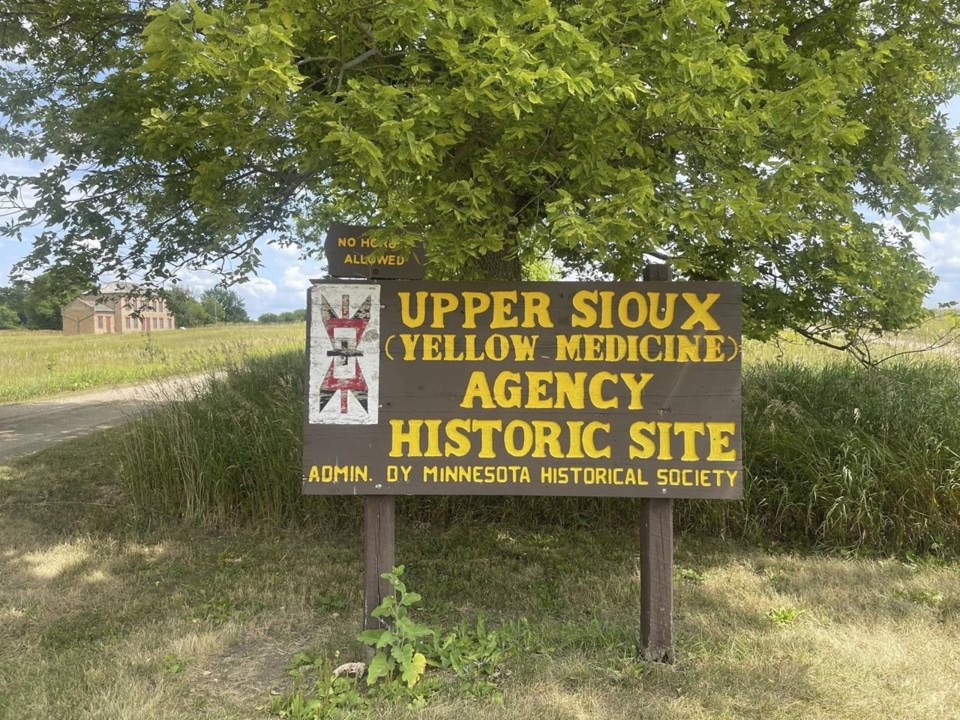GRANITE FALLS, Minn. (AP) — Golden prairies and winding rivers of a Minnesota state park also hold the secret burial sites of Dakota people who died as the United States failed to fulfill treaties with Native Americans more than a century ago. Now their descendants are getting the land back.
The state is taking the rare step of transferring the park with a fraught history back to a Dakota tribe, trying to make amends for events that led to a war and the largest mass hanging in U.S. history.
“It’s a place of holocaust. Our people starved to death there,” said Kevin Jensvold, chairman of the Upper Sioux Community, a small tribe with about 550 members just outside the park.
The Upper Sioux Agency State Park in southwestern Minnesota spans a little more than 2 square miles (about 5 square kilometers) and includes the ruins of a federal complex where officers withheld supplies from Dakota people, leading to starvation and deaths.
Decades of tension exploded into the U.S.-Dakota War of 1862 between settler-colonists and a faction of Dakota people, according to the Minnesota Historical Society. After the U.S. won the war, the government hanged more people than in any other execution in the nation. A memorial honors the 38 Dakota men killed in Mankato, 110 miles (177 kilometers) from the park.
Jensvold said he has spent 18 years asking the state to return the park to his tribe. He began when a tribal elder told him it was unjust Dakota people at the time needed to pay a state fee for each visit to the graves of their ancestors there.
Lawmakers finally authorized the transfer this year when Democrats took control of the House, Senate and governor’s office for the first time in nearly a decade, said state Sen. Mary Kunesh, a Democrat and descendant of the Standing Rock Nation.
Tribes speaking out about injustices have helped more people understand how lands were taken and treaties were often not upheld, Kunesh said, adding that people seem more interested now in “doing the right thing and getting lands back to tribes."
But the transfer also would mean fewer tourists and less money for the nearby town of Granite Falls, said Mayor Dave Smiglewski. He and other opponents say recreational land and historic sites should be publicly owned, not given to a few people, though lawmakers set aside funding for the state to buy land to replace losses in the transfer.
The park is dotted with hiking trails, campsites, picnic tables, fishing access, snowmobiling and horseback riding routes and tall grasses with wildflowers that dance in hot summer winds.
“People that want to make things right with history’s injustices are compelled often to support action like this without thinking about other ramifications,” Smiglewski said. “A number, if not a majority, of state parks have similar sacred meaning to Indigenous tribes. So where would it stop?”
In recent years, some tribes in the U.S., Canada and Australia have gotten their rights to ancestral lands restored with the growth of the Land Back movement, which seeks to return lands to Indigenous people.
A national park has never been transferred from the U.S. government to a tribal nation, but a handful are co-managed with tribes, including Grand Portage National Monument in northern Minnesota, Canyon de Chelly National Monument in Arizona and Glacier Bay National Park in Alaska, Jenny Anzelmo-Sarles of the National Park Service said.
This will be the first time Minnesota transfers a state park to a Native American community, said Ann Pierce, director of Minnesota State Parks and Trails at the Department of Natural Resources.
Minnesota's transfer, expected to take years to finish, is tucked into several large bills covering several issues. The bills allocate more than $6 million to facilitate the transfer by 2033. The money can be used to buy land with recreational opportunities and pay for appraisals, road and bridge demolition and other engineering.
Rep. Chris Swedzinski and Sen. Gary Dahms, the Republican lawmakers representing the portion of the state encompassing the park, declined through their aides to comment about their stances on the transfer.
They voted against a key bill allocating $5 million to the transfer. The vote was largely on party lines and passed with broad support from Democrats.
Tribal wins are rare in these conflicts, but the land transfer is a victory, Jensvold said.
“We’re just a small community," he said. “We’ve accomplished something that teetered on the edge of impossible.”
___
Trisha Ahmed is a corps member for the Associated Press/Report for America Statehouse News Initiative. Report for America is a nonprofit national service program that places journalists in local newsrooms to report on under-covered issues. Follow her on X, formerly known as Twitter: @TrishaAhmed15
Trisha Ahmed, The Associated Press



